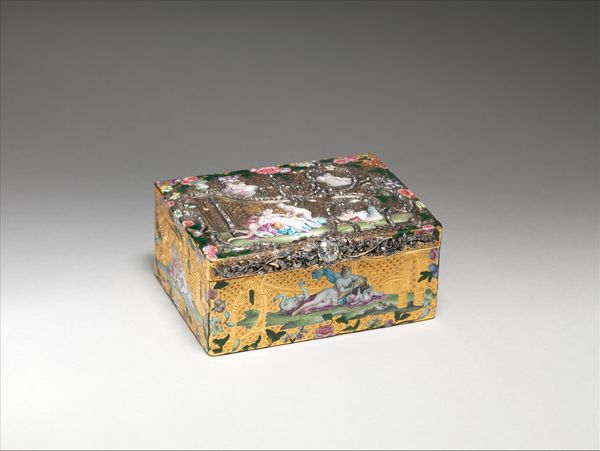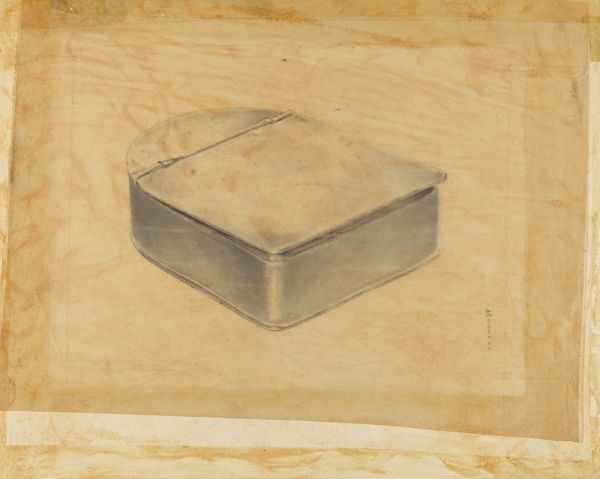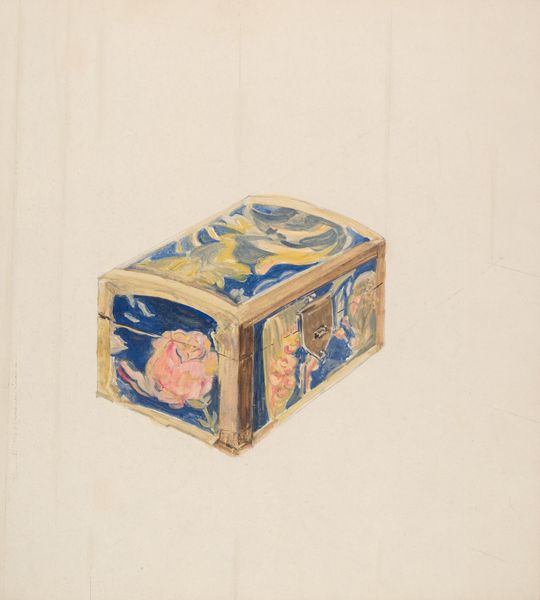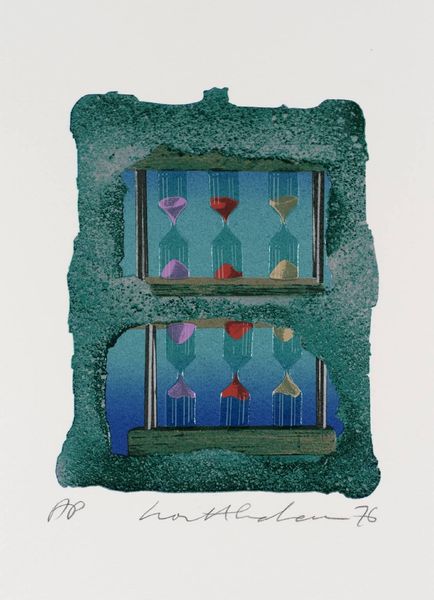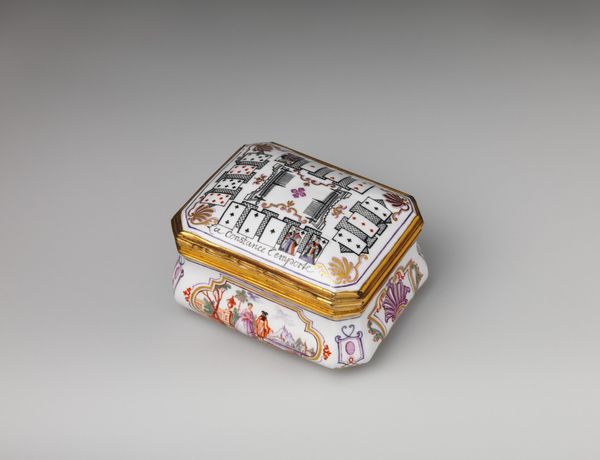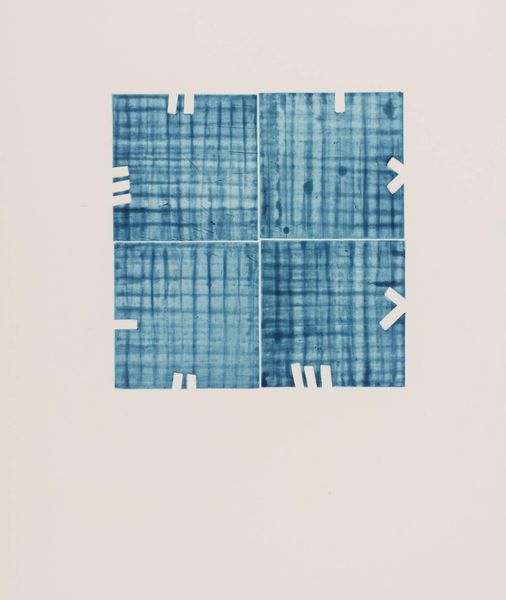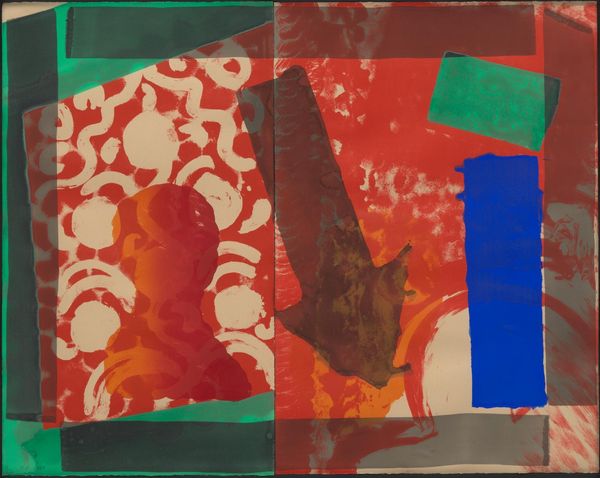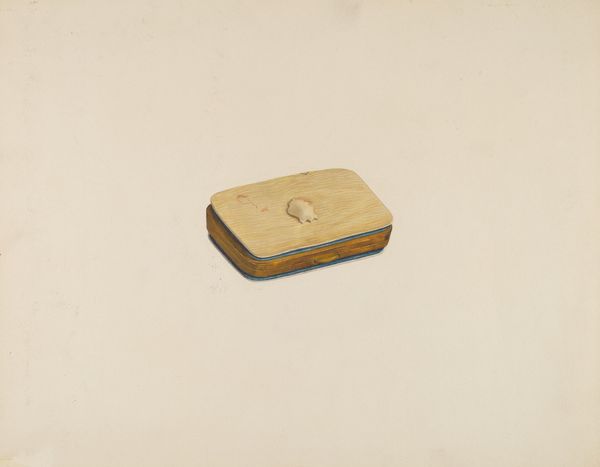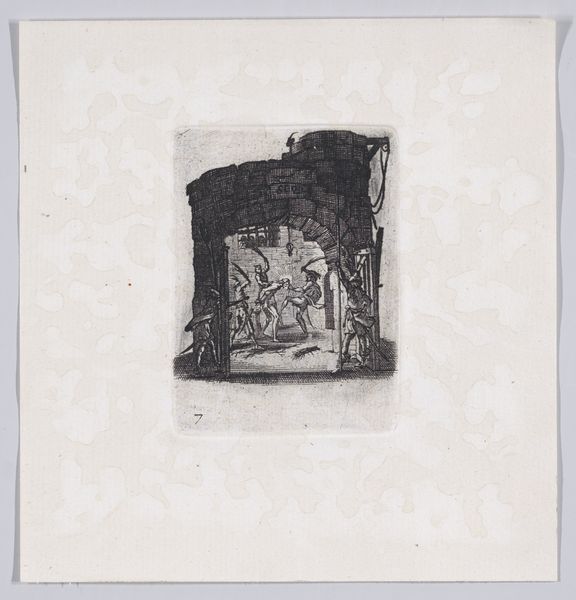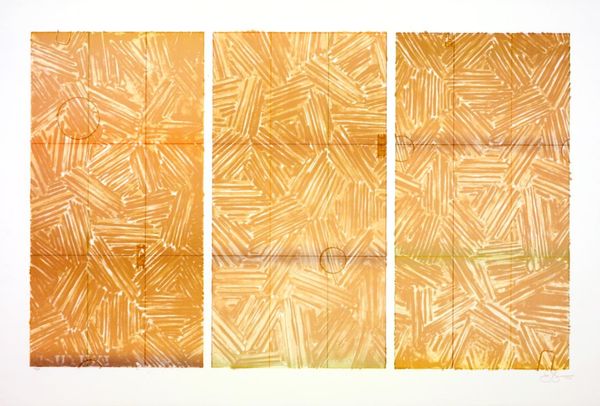
drawing, watercolor
drawing
water colours
watercolor
watercolor
realism
Dimensions: overall: 39.5 x 30 cm (15 9/16 x 11 13/16 in.) Original IAD Object: 6 7/8" long; 4 3/8" wide
Copyright: National Gallery of Art: CC0 1.0
Curator: Editor: This watercolor painting, "Pa. German Wallpaper Box" by Edward W. Buechner, made around 1937, shows two simple boxes. The top one is closed, the bottom is open and seems to be lined with newspaper. What strikes me most is how carefully the wallpaper design is rendered. What do you see here? Curator: These watercolor drawings, quite literally, illuminate the usually invisible network of production and labor that went into something as seemingly simple as a wallpaper box. Consider the source material: mass-produced wallpaper scraps and discarded newspaper. Editor: So, by choosing to depict these commonplace objects, is Buechner highlighting their intrinsic value? Curator: Precisely. He is elevating the artistry inherent in the manufacturing and design of these disposable items. Notice the meticulous detail in replicating the wallpaper pattern, the texture. These boxes likely had a functional, utilitarian purpose. It prompts a question: does the painting re-evaluate the original goal of these objects? Editor: Interesting, so he’s prompting us to rethink what is normally considered disposable. The presence of newsprint lining also seems relevant in this way. I hadn’t considered the link between materiality, labor, and artistry quite so explicitly before. Thanks! Curator: Indeed. Thinking about how we value materials and the labor associated with them can provide entirely new insight into art of all kinds.
Comments
No comments
Be the first to comment and join the conversation on the ultimate creative platform.
